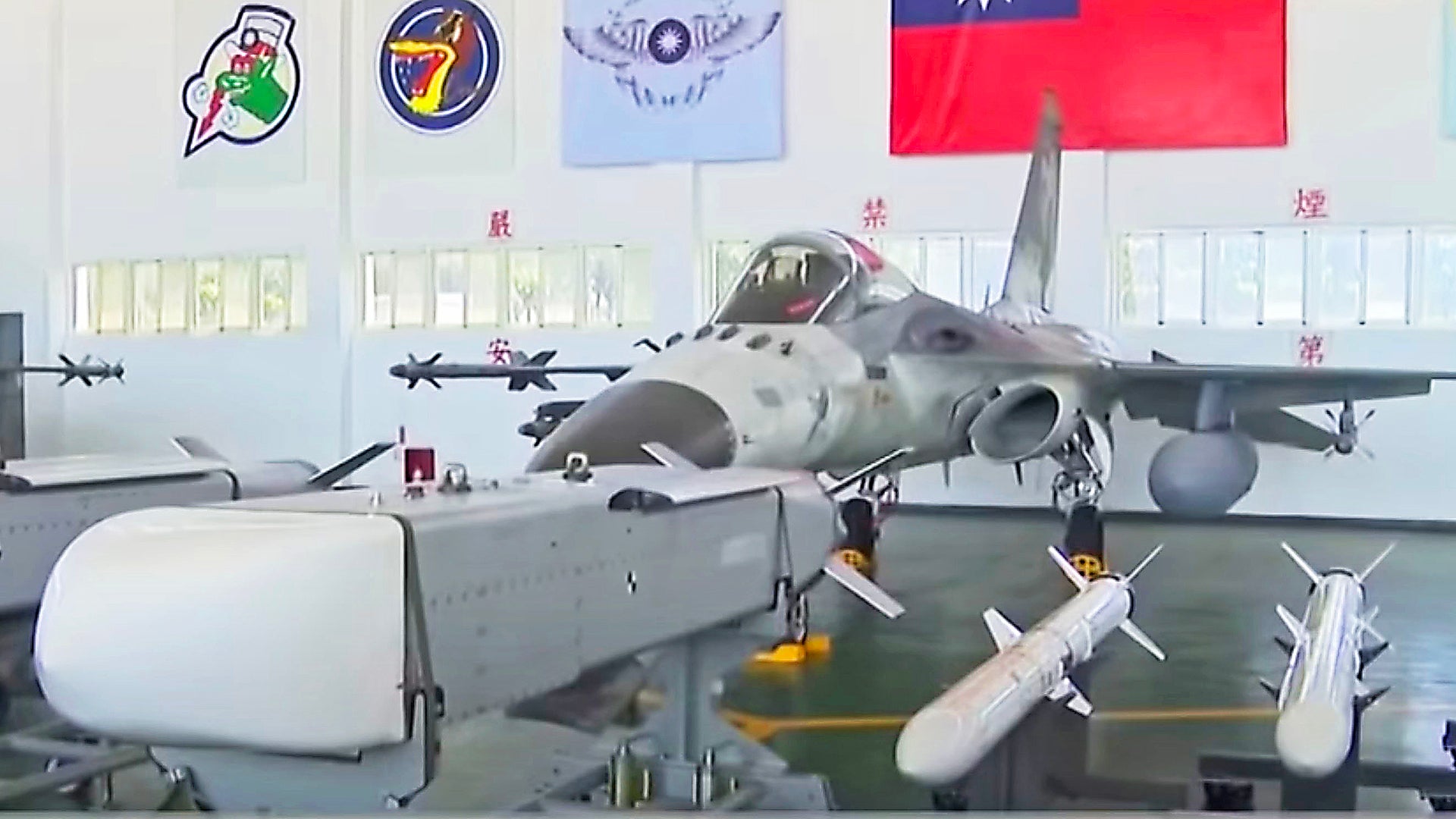During a visit to the Republic of China Air Force’s Makung Air Force Base on the Penghu archipelago, on September 22, 2020, Taiwan’s President Tsai Ing-wen was shown a display of Wan Chien conventionally-armed air-launched land-attack cruise missiles. The weapons are carried exclusively by the air force’s fleet of F-CK-1C/D Indigenous Defense Fighters (IDF) that are deployed to Makung AFB on a rotational basis.
Tsai took the opportunity to praise Republic of China Air Force (ROCAF) aircrew stationed on Penghu for their “heroic performance” in intercepting aircraft from the People’s Liberation Army (PLA) over the Strait — an activity that’s become a more regular occurrence in recent weeks.
“I’m aware that facing the provocative behavior of the communist planes that have encircled the island and damaged regional peace in recent days, your duty at the front line of the airspace in Penghu must be even heavier,” the president told ROCAF personnel at Makung AFB.
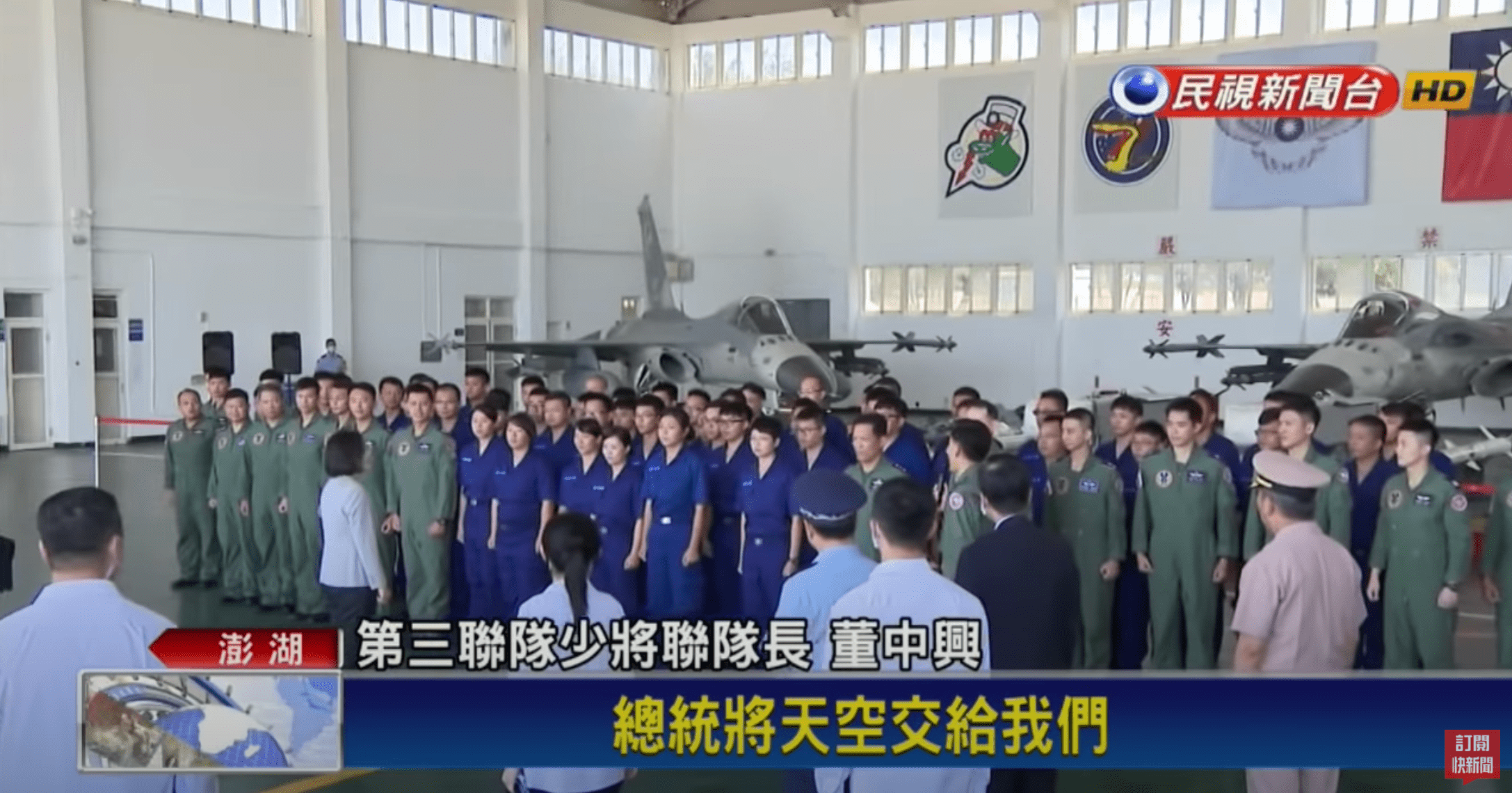
The significance of the indigenous Wan Chien missile within the ROCAF armory in particular is its ability to be launched from F-CK-1C/Ds operating above the Taiwan Strait and hit targets on the Chinese mainland. Basing jets on Penghu — a group of 64 islands between Taiwan and mainland China — brings them even closer to the PRC and provides a useful forward location to counter any potential invasion from across the Strait. Of course, it is arguable exactly how long the air base at Makung would survive in the case of an all-out attack by the PLA, which is well equipped with ballistic and cruise missiles tailored for just such strikes.
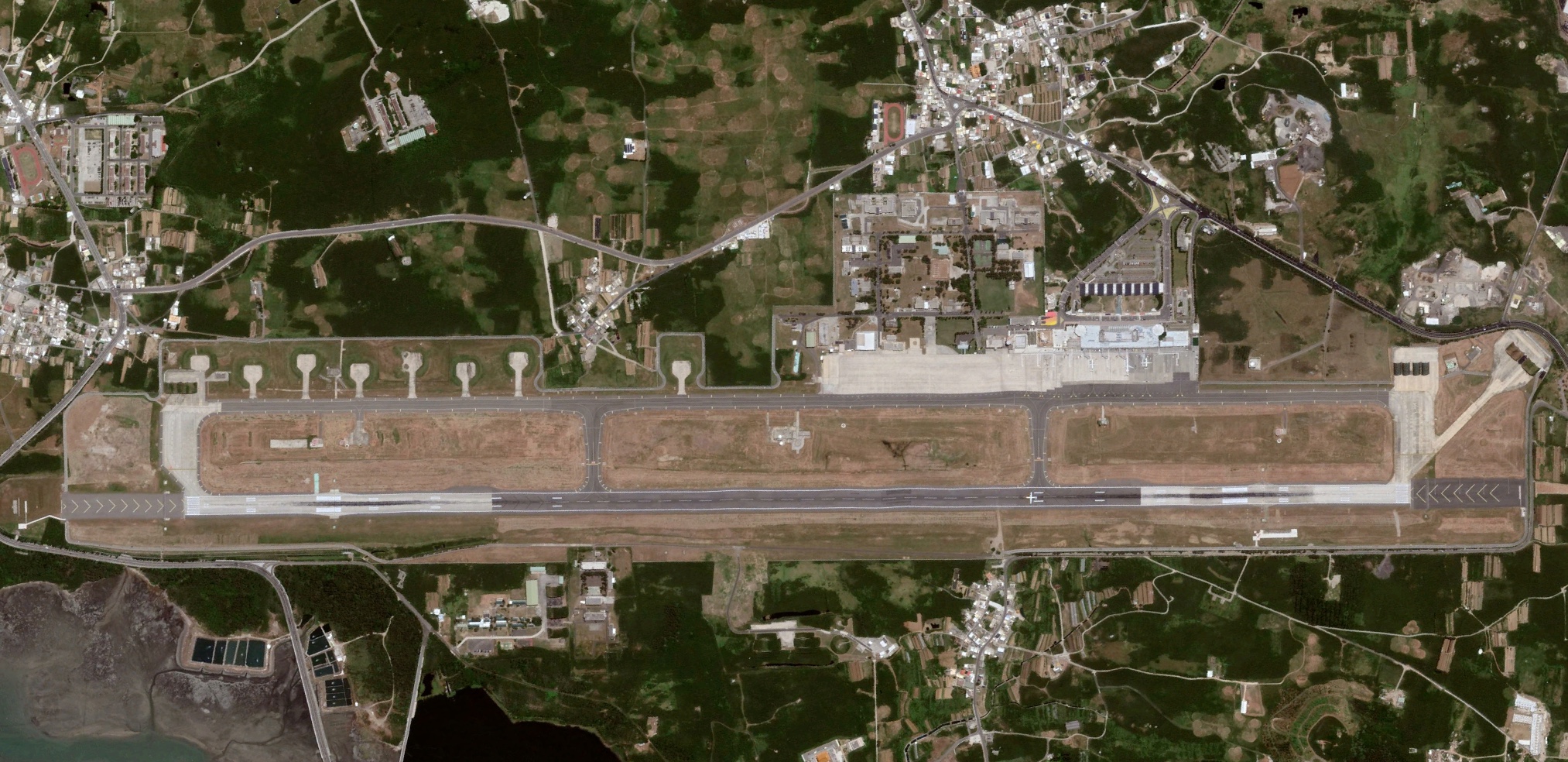
A ROCAF officer at Makung AFB told the Reuters agency that the IDF jets are required to scramble to intercept PLA aircraft within five minutes. Another official confirmed that the fighter jets stationed on Penghu are currently being launched “almost every day” in response to PLA aircraft activity.
Makung AFB is home to detachments of F-CK-1C/Ds drawn from either the 1st Tactical Fighter Wing (TFW) or 3rd TFW, based on the main island of Taiwan and which are usually forward-deployed to Penghu between April and October each year.

In peacetime, the presence of the Wan Chien missiles on Penghu is in keeping with Taiwan’s strategy of presenting Beijing with a credible deterrent, and should that deterrent fail, they would help defend against a PLA attack and possible invasion, during which their likely targets would include airfields, ports, missile sites, and radar stations. The missile’s standoff capability would allow it to be launched outside the range of many of the PLA’s ground-based air defense systems.
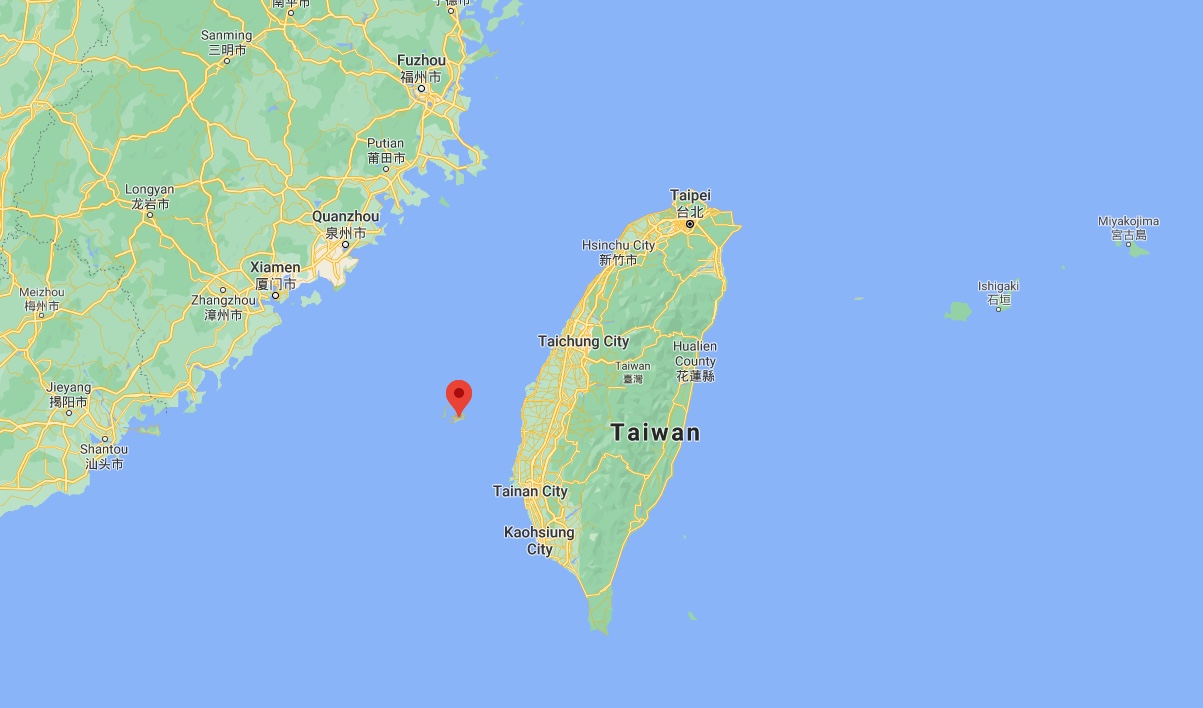
These missiles, which first entered service in 2018, have a reported range of 155 miles and use GPS guidance. The Wan Chien — the name means ‘ten thousand swords’ — is broadly similar in appearance to MBDA’s Taurus KEPD 350, with similar pop-out wings located at the top of the missile body, but with the air intake for the turbojet motor located below the rear section of the weapon. The missile can reportedly accommodate a range of different warhead options, comprising high-explosive, semi-armor-piercing, or submunitions.
As well as the Wan Chien missiles on display on Penghu, which have a primary land-attack role, live AGM-84 Harpoon anti-ship missiles have also recently been seen carried by ROCAF F-16 fighters, as The War Zone discussed here.
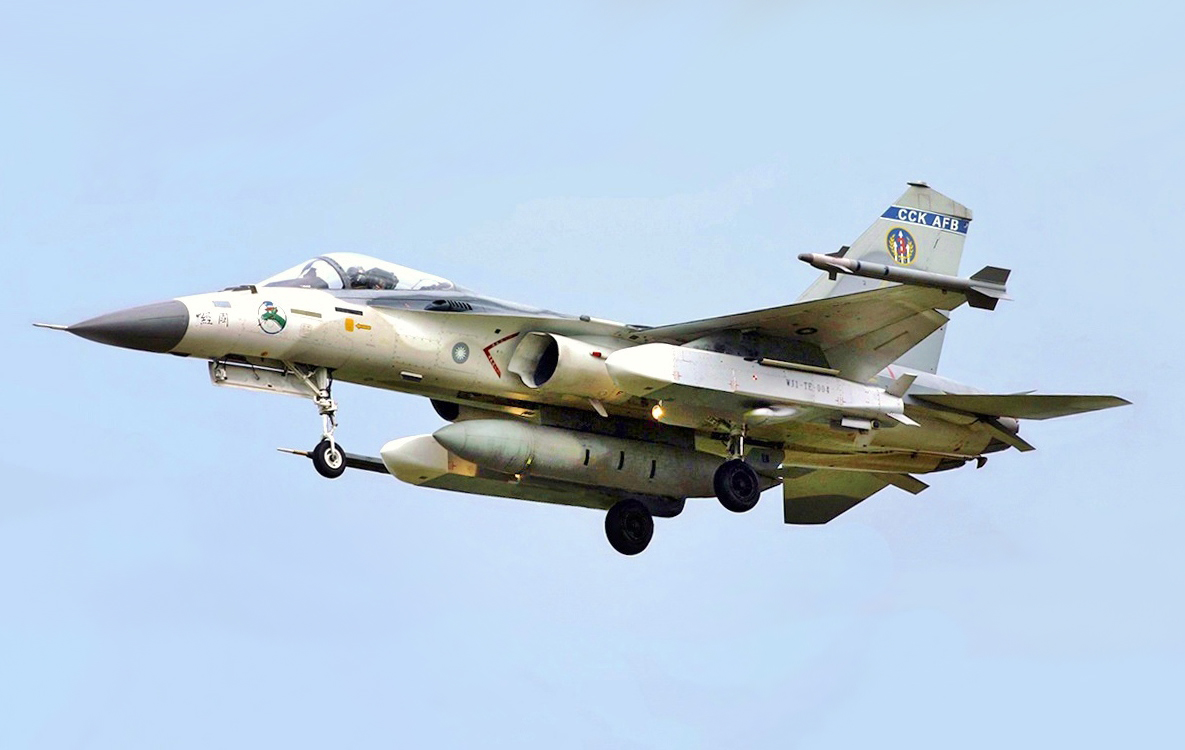
Produced by the military-run Chung Shan Institute of Science and Technology (CSIST), the Wan Chien missile is an important part of a wide-ranging upgrade program that has been undertaken for the ROCAF F-CK-1 fighter fleet, which numbers 103 single-seat F-CK-1C and 26 twin-seat F-CK-1D aircraft, according to Flight International’s World Air Forces 2020 survey. The upgraded aircraft is officially known as Hsiung Ying, meaning ‘Brave Hawk.’
The president’s visit to the islands was clearly timed as a response to the notable increase in the antagonism between Taiwan and the PRC, as well as a spike in aerial activity by both nations over the Taiwan Strait.
The PRC views Taiwan as a rogue province and both political and military tensions between the island and the mainland have ramped up significantly in recent years.
Under the Trump Administration, the United States has intensified its military relationship with Taiwan. The current U.S. administration has secured unprecedented arms deals with the country, including the purchase of new Block 70 F-16C/D fighter jets for the ROCAF, and further weapons sales are anticipated.
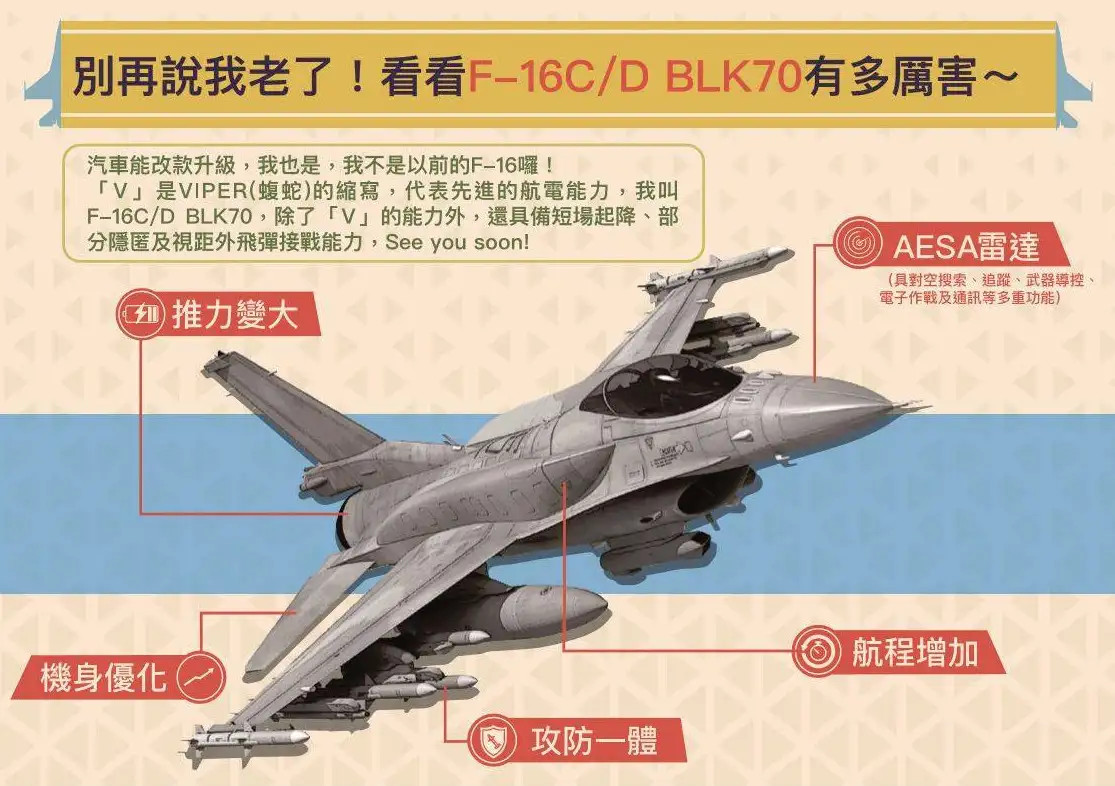
The PLA’s recent maneuvers near Taiwan have been seen as a response to the visit to Taipei by Keith Krach, an economic representative from the U.S. government, described as “the highest-level official from the State Department to visit the island in decades.”
Increased Chinese military activity around Taiwan has included high-profile incidents in which PLA aircraft have crossed the median line in the Taiwan Strait that separates the highly sensitive channel and acts as an unofficial airspace boundary between the mainland and the island.
However, Wang Wenbin, a spokesperson for the PRC’s Ministry of Foreign Affairs, recently argued that “The so-called ‘median line’ is non-existent,” adding that Taiwan itself “is an inalienable part of China’s territory.”
Taiwan’s Foreign Minister Joseph Wu responded by describing the line as a “symbol of the status quo to avoid cross-strait military conflict and maintain peace and stability.” He further demanded that “the Chinese government stops everything that it has been doing.”
While PLA aircraft entering Taiwanese airspace is not in itself unusual, the latest incidents have involved more assets than in the past and these have been approaching the area from different directions simultaneously.
Apparently in response to Krach’s visit to Taiwan, a force of 18 PLA aircraft crossed the median line on September 18, then entered the island’s air defense identification zone (ADIZ). The PLA aircraft included a pair of PLAAF H-6K bombers, at least one of which was carrying four YJ-12 anti-ship missiles. Also involved were eight J-16 fighter-bombers, four J-10 fighters, and four J-11 fighters.

Other officials in Beijing have also been reiterating the PRC’s claims to Taiwan, official news agency Xinhua quoting Ren Guoqiang, a spokesperson for the country’s Ministry of National Defense, as saying these exercises are “a necessary move aimed at the current situation in the Taiwan Strait to safeguard national sovereignty and territorial integrity.” Ren then issued the warning: “Those who play with fire will get burnt.”
In a statement on Twitter, Taiwan’s Ministry of National Defense called for Beijing to “exercise restraint and refrain from escalating tensions across the Taiwan Straits. PLA’s military intimidation is deplorable and has caused resentment amongst people in Taiwan. We call on PRC cherish peace and maintain regional stability [sic].”
A day later, September 19, the PLA was again back in force in the region, its aircraft crossing the median line and entering Taiwan’s southwest ADIZ. On this occasion, the aircraft involved were 12 J-16s, two J-10s, two J-11s, two H-6s, and a single Y-8 anti-submarine warfare aircraft. The Republic of China Air Force said it responded by issuing radio warnings and scrambling fighters and that it “deployed [an] air defense missile system to monitor the activities.”
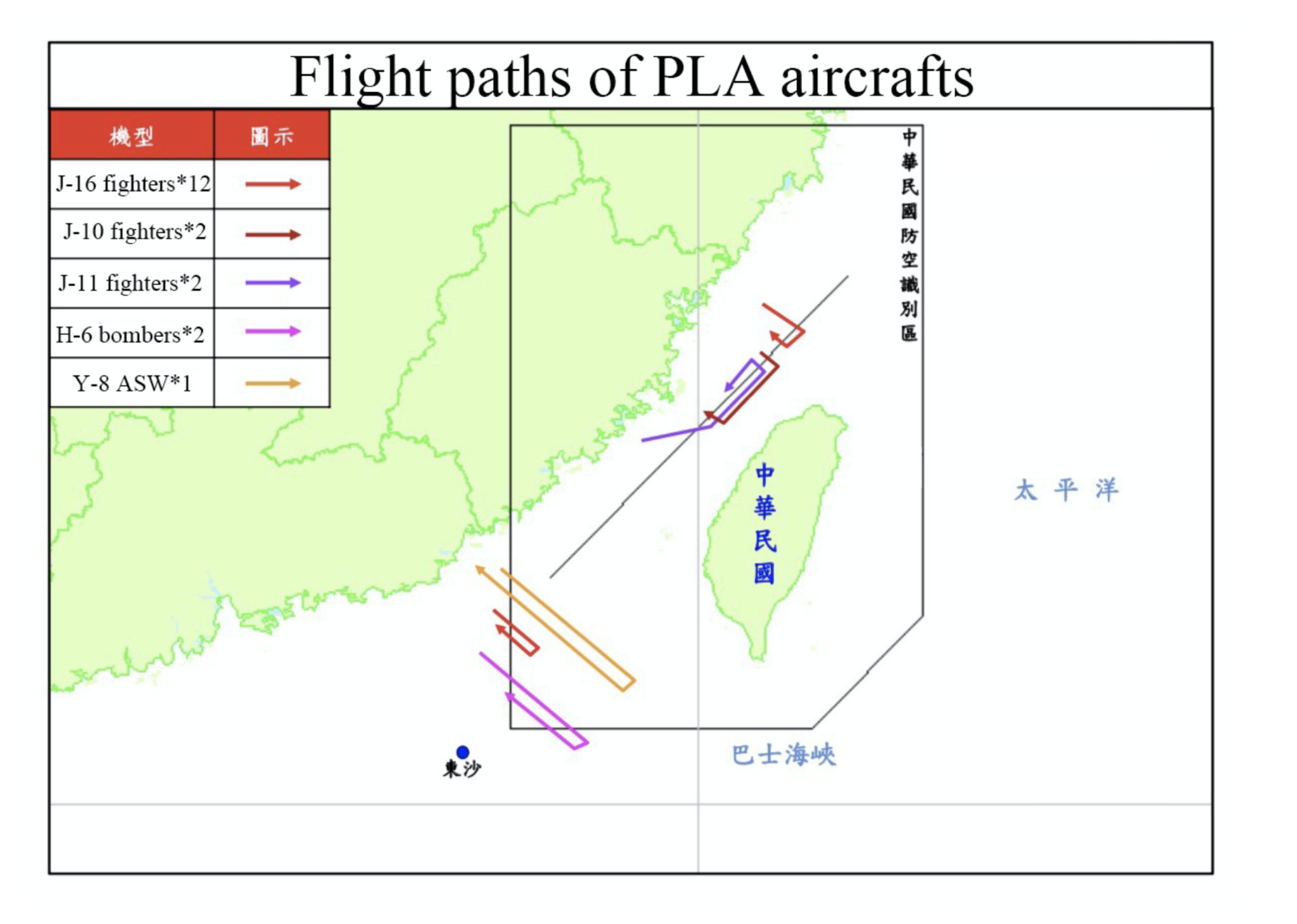
The massed deployment of aircraft in the region is a tactic that Beijing has used before to demonstrate its displeasure with U.S. activity relating to the island. Back in August 2020, formations of J-10 and J-11 fighters also crossed the median line, on that occasion apparently in response to a high-level visit to Taiwan by the U.S. Health and Human Services Secretary Alex Azar.
Clearly, the war of words between the PRC and Taiwan has escalated and, with it, Taiwan’s eagerness to demonstrate the high-tech weapons that it sees as an essential counterbalance to Beijing’s territorial ambitions.
Contact the author: thomas@the drive.com
